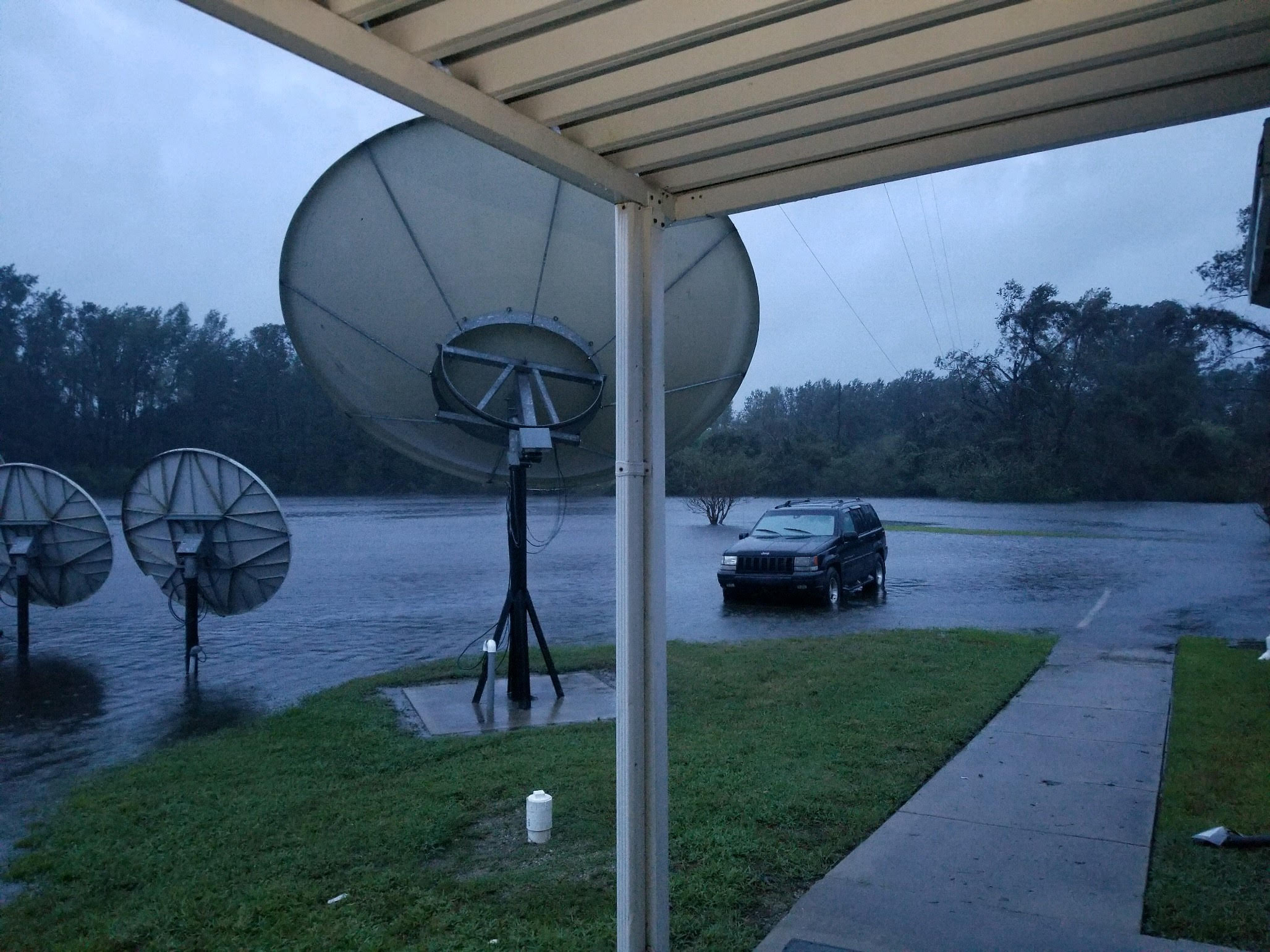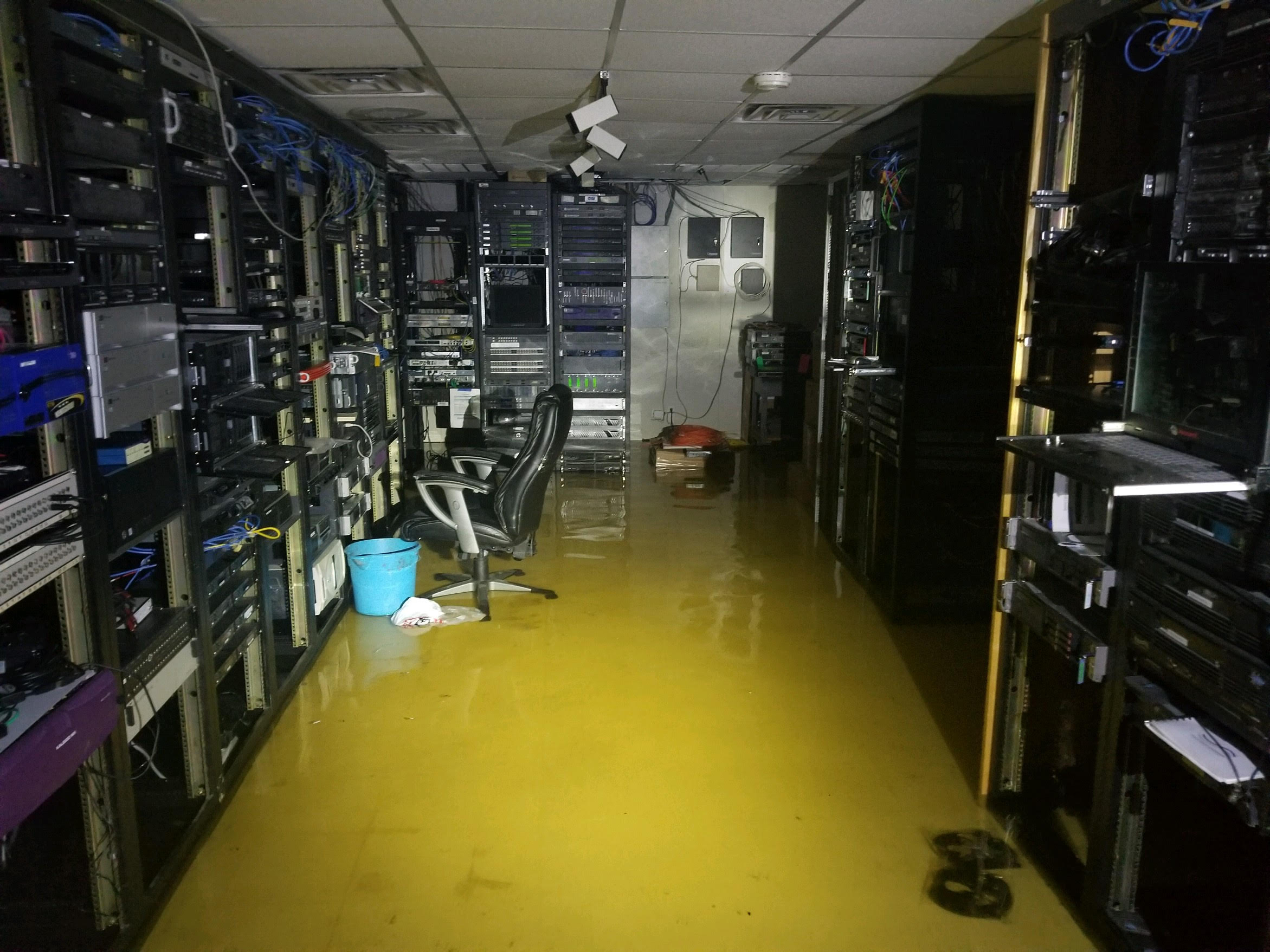Sinclair Pools Group Resources To Overcome Hurricane Knockout
NEW BERN, N.C. –Hurricane Florence may have flooded the studios of WCTI, the Sinclair Broadcast Group-owned ABC affiliate in New Bern, N.C., and knocked local power out, but that didn’t keep the station from restoring service to its viewers within a day and a half.
“We were forced to evacuate at WCTI at 8 o’clock on that Thursday night [Sept. 13],” recalls Sinclair SVP of News Scott Livingston. “Then we switched into our Myrtle Beach feed…. Then we went dark due to the storm.”
However, before the station went dark, viewers were advised to continue tracking the storm on the WCTI website and social media pages. Traffic to the destinations spiked when the station went off air, says Livingston.

Broadcasters throughout the Carolinas, eastern Georgia and Virginia began preparing a week or more before what was once a Category 4 hurricane made landfall. For Sinclair, preparations included prepositioning satellite trucks at the transmitter sites of its stations threatened by Hurricane Florence.
In the case of WCTI, Sinclair dispatched a satellite truck from WPEC, its CBS affiliate in West Palm Beach, Fla., along with a satellite truck operator, operations personnel and a group news director, to the station’s transmitter site –a precautionary step to restore television if the studio was affected, he says.
By time the intensity of the storm had subsided in New Bern and power was restored on Sept. 15, the WPEC crew was making final preparations to resume over-the-air coverage to New Bern viewers with the help of Sinclair’s Hurricane Florence mothership at WJLA in Washington, D.C., its digital desk and sister stations around the region, says Livingston.
“The [the crew from WPEC] made it out to the truck around 10:30 [a.m.] on Saturday morning,” he says. “They put the dish up, and we were transmitting around 11:45 [a.m.] and then went wall-to-wall till 6 o’clock.”
Get the TV Tech Newsletter
The professional video industry's #1 source for news, trends and product and tech information. Sign up below.
As WJLA was wrapping up 30 hours of continuous coverage of the storm, which the station streamed and made available as a backup to Sinclair stations affected by the storm, it began producing coverage for viewers in New Bern. That special feed was beamed from D.C. to the WPEC satellite truck in New Bern and broadcast by WCTI.
“We had a triple box,” says Livingston. “The big box had reports from the field crews of WCIV [contributed via SNG feeds to D.C. from two other Sinclair satellite trucks]. We had radar in another of the boxes, and in the third box live pictures from sister stations and other sources because on Saturday the storm was still impacting South Carolina.”
While Livingston describes the triple box as “fairly simple television,” he says the important thing was that WCTI “was where it was happening—at the intersection of news, literally.”

WJLA remotely produced New Bern newscasts all day on Saturday, Sept. 15, as well WCTI’s evening newscast the next day, its morning show on Sept. 17 and newscasts throughout the week.
Since late last week, WCTI’s newsroom has begun operating out of a trailer Sinclair sent to the station, says Livingston. In the immediate aftermath of the storm, the station’s newsroom took up temporary residence at a local community college.
Hurricane Florence flooded WCTI’s studios with six to eight inches of water, requiring carpet to be ripped out, and sheet rock and damaged equipment to be replaced.
While the station sustained damage, there was no loss of life or injury to station personnel, a silver lining for which everyone involved with Sinclair is grateful, he says.
Although it’s never desirable to get hit directly by a storm like Hurricane Florence, the event gave the station’s news department and Sinclair the opportunity to prove its mettle.
“It was certainly a defining moment for the station and a defining moment for our news organization to be able to pull off what we did,” says Livingston. “I couldn’t be prouder.
Phil Kurz is a contributing editor to TV Tech. He has written about TV and video technology for more than 30 years and served as editor of three leading industry magazines. He earned a Bachelor of Journalism and a Master’s Degree in Journalism from the University of Missouri-Columbia School of Journalism.

